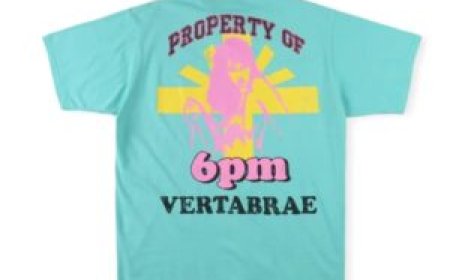How to find the best BBQ platters in Memphis
How to Find the Best BBQ Platters in Memphis Memphis, Tennessee, isn’t just a city of music and history—it’s a pilgrimage site for barbecue lovers from across the globe. When it comes to smoked meats, slow-cooked perfection, and signature sauces, Memphis stands among the elite. But with dozens of barbecue joints lining its streets, from historic roadside shacks to upscale urban pits, finding the b
How to Find the Best BBQ Platters in Memphis
Memphis, Tennessee, isn’t just a city of music and history—it’s a pilgrimage site for barbecue lovers from across the globe. When it comes to smoked meats, slow-cooked perfection, and signature sauces, Memphis stands among the elite. But with dozens of barbecue joints lining its streets, from historic roadside shacks to upscale urban pits, finding the best BBQ platters isn’t just about following a map—it’s about understanding the craft, the culture, and the subtle differences that separate good from unforgettable.
This guide is your comprehensive roadmap to identifying and experiencing the finest BBQ platters Memphis has to offer. Whether you’re a first-time visitor or a seasoned pitmaster enthusiast, this tutorial will equip you with the knowledge, strategies, and insider tips to navigate Memphis’ vibrant barbecue scene with confidence. You’ll learn how to evaluate platters beyond just the meat, how to decode regional styles, and where to find the hidden gems that locals swear by.
By the end of this guide, you won’t just know where to eat—you’ll know why certain platters stand out, how to order like a local, and what makes Memphis barbecue truly unique in the American culinary landscape.
Step-by-Step Guide
Step 1: Understand Memphis BBQ Styles
Before you even step into a restaurant, you need to know what you’re looking for. Memphis barbecue is defined by two primary styles: dry-rubbed and wet-sauced. Both are excellent, but they serve different purposes on a platter.
Dry-rubbed ribs and pulled pork are coated in a spice blend—often featuring paprika, garlic powder, cayenne, brown sugar, and black pepper—then smoked low and slow. The result is a crusty, flavorful bark that clings to the meat without drowning it in sauce. These platters are ideal for purists who want to taste the smoke and the spice.
Wet BBQ, on the other hand, is basted with a tangy, tomato-based sauce during or after smoking. The sauce is thinner than Kansas City’s and less sweet than Texas’—it’s meant to complement, not overpower. Wet platters often come with extra sauce on the side, allowing you to control the intensity.
Many top joints offer both styles on the same platter. Look for menus that let you choose “dry,” “wet,” or “half and half.” This flexibility is a sign of a serious pitmaster who respects tradition and customization.
Step 2: Identify the Core Components of a Quality Platter
A great BBQ platter isn’t just about ribs. It’s a balanced experience of meat, sides, and presentation. Here’s what to look for:
- Meat Selection: The most common proteins are ribs, pulled pork, brisket, and sausage. Ribs should be fall-off-the-bone tender but still have structure—no mushiness. Pulled pork should be moist, shredded cleanly, and infused with smoke. Brisket should have a dark bark and a pink smoke ring.
- Portion Size: A standard platter typically includes two meats with two sides. Avoid places that skimp on meat or serve tiny portions. The best joints offer generous servings that justify the price.
- Sides: Classic Memphis sides include baked beans (often sweetened with molasses), coleslaw (vinegar-based, not creamy), potato salad, and cornbread. The sides should be fresh, homemade, and complement—not compete with—the meat.
- Sauce: Always check if sauce is included or served on the side. The best places offer at least two: a traditional Memphis-style sauce and a spicier house variant. Never assume the sauce is an afterthought—it’s part of the craft.
- Presentation: A well-assembled platter is served on a butcher paper-lined tray or a sturdy plate. The meat should be visibly smoked, with a glossy sheen from the sauce or rub. No plastic containers or styrofoam trays—those are signs of a tourist trap.
Step 3: Research Local Reputation and Longevity
Memphis has been smoking meat since the 1920s. The best places aren’t new—they’ve earned their stripes over decades. Look for joints that have been operating for 20+ years. Names like Central BBQ, Corky’s, and Jim Neely’s Interstate Bar-B-Q aren’t just popular—they’re institutions.
Use Google Maps to check the “Years in Business” badge. Read reviews, but focus on those that mention consistency over time. A restaurant that’s been rated 4.8 stars for 15 years is more reliable than one that suddenly went viral on TikTok.
Also, check if the restaurant has won any local or regional awards. The Memphis in May World Championship Barbecue Cooking Contest is the most prestigious in the country. While winning doesn’t guarantee the best platter, it’s a strong indicator of technical mastery. Look for places that have placed in the “Best Ribs” or “Best Pulled Pork” categories.
Step 4: Visit During Peak Hours to Test Consistency
One of the best ways to judge a BBQ joint is to visit during lunch rush. If the kitchen is overwhelmed, the meat will be overcooked or under-sauced. But if the staff maintains quality even under pressure, that’s a sign of a well-run operation.
Go between 11:30 a.m. and 1:30 p.m. on a weekday. Avoid weekends if you want to observe how the kitchen handles volume. A place that serves perfect ribs at 12 p.m. and still serves perfect ribs at 2 p.m. is worth your time.
Also, watch how the staff handles orders. Do they ask if you want your ribs dry or wet? Do they offer a taste of the sauce? Do they stack the meat neatly? These small details reveal a lot about their pride in the craft.
Step 5: Order Like a Local
Don’t just pick the most expensive platter. Ask the server: “What’s your most popular platter?” or “What do you eat here when you’re off-duty?” Locals often order “two meats, one side, extra sauce on the side,” not the full combo.
Consider the “Pit Master’s Choice” or “Chef’s Special” platter if it’s available. These are often curated by the pitmaster and include their favorite cuts or combinations—like pork belly with smoked sausage and a side of pickled okra.
Also, don’t be afraid to customize. Ask for an extra piece of brisket, or swap a side. Most Memphis BBQ joints will accommodate reasonable requests. If they say no, that’s a red flag.
Step 6: Taste and Compare Across Multiple Joints
Don’t settle for one spot. To truly find the best, you need to taste at least three to five different places. Plan a “BBQ crawl” over two days. Here’s a suggested order:
- Start with a historic spot like Central BBQ—known for its dry ribs and signature sauce.
- Then head to Bar-B-Q Shop—a no-frills, cash-only joint with legendary pulled pork.
- Try Jim Neely’s Interstate Bar-B-Q for their wet ribs and house-made coleslaw.
- Finish with Cozy Corner—a family-run favorite with incredible burnt ends.
Take notes after each meal. Rate the meat tenderness, smoke flavor, sauce balance, and side quality. Don’t rely on memory—write it down. You’ll be surprised how your preferences shift after tasting multiple styles.
Step 7: Pay Attention to the Smoke and Aroma
The smell of a BBQ joint is one of the most underrated indicators of quality. Walk up to the restaurant before entering. Do you smell wood smoke—hickory or oak—not just grease or char? The scent should be deep, earthy, and inviting, not acrid or artificial.
Top Memphis joints use real hardwood, often hickory or a mix of hickory and applewood. The smoke should permeate the meat, not just sit on the surface. If the meat smells like it was sprayed with liquid smoke, walk away.
Also, observe the pit. If the restaurant has an open pit or visible smoker outside, that’s a good sign. Many of the best places let you see the fire, the wood, and the racks of meat. Transparency builds trust.
Step 8: Check for Freshness and Daily Specials
BBQ is perishable. The best joints smoke fresh meat every day—no reheating, no pre-cooked batches. Ask: “Is this smoked today?” If they hesitate, it’s a warning.
Look for daily specials on the chalkboard or menu. These often include limited-time items like smoked turkey, pork shoulder, or even brisket tacos. Specials indicate that the kitchen is active, creative, and not just running on autopilot.
Also, avoid places that have the same menu every day for months. A rotating selection shows they’re adapting to seasonal ingredients and customer feedback.
Step 9: Evaluate the Value for Money
Memphis BBQ platters range from $12 to $30. The best value isn’t always the cheapest—it’s the one that delivers the most flavor per dollar.
Compare platters by meat weight, not price. A $18 platter with 10 ounces of ribs and 6 ounces of pork is better than a $22 platter with 6 ounces of ribs and 3 ounces of pork. Ask for the weight if it’s not listed.
Also, consider the sides. A $15 platter with two homemade sides is better than a $20 platter with microwaved beans and soggy fries.
Don’t be fooled by “all-you-can-eat” deals. They often mean lower quality meat and rushed service. Quality BBQ is slow-cooked—it doesn’t scale well for buffets.
Step 10: Trust Your Palate, Not the Hype
Online reviews are helpful, but they’re not gospel. One person’s “best BBQ ever” might be another’s “too sweet.” Your taste buds are your best tool.
Ask yourself:
- Did the meat taste like smoke, not salt?
- Was the sauce an enhancement or a mask?
- Did the sides feel like they were made that morning?
- Did you want to order another plate?
If the answer to the last question is yes, you’ve found a contender.
Don’t let a place’s Instagram aesthetic or celebrity visits sway you. The best BBQ in Memphis isn’t always the most photographed. Sometimes, it’s the unassuming spot with no sign, no menu board, and a line out the door.
Best Practices
Practice 1: Prioritize Smoke Flavor Over Sauce
In Memphis, the smoke is the star. A great platter lets the wood and time do the work. If you need to drown the meat in sauce to enjoy it, the pitmaster missed the mark.
Best practice: Taste the meat plain first. Then try it with sauce. If the flavor improves, the sauce is good. If it hides the meat, the meat is weak.
Practice 2: Order with the Seasons
BBQ joints often adjust their recipes based on the weather and available ingredients. In summer, you might find lighter sides like watermelon salad or grilled corn. In winter, expect richer beans and heavier meats.
Best practice: Visit in spring or fall for the most balanced menus. Summer can mean rushed service due to tourism; winter can mean limited availability of fresh produce.
Practice 3: Avoid Tourist Traps Near Beale Street
Beale Street is iconic—but its BBQ joints are often overpriced and underwhelming. The real gems are in the neighborhoods: South Memphis, Orange Mound, and East Memphis.
Best practice: Use Google Maps to search “BBQ near me” and sort by “Highest Rated,” then filter out places with “tourist” in the reviews. Look for addresses that are at least a 10-minute drive from downtown.
Practice 4: Bring Cash
Many of Memphis’ most beloved BBQ spots are cash-only. Credit card machines break. Owners prefer cash for simplicity. If you show up with only a card and they can’t process it, you’re stuck.
Best practice: Always carry $50–$100 in small bills when BBQ hunting. It’s not just convenience—it’s cultural respect.
Practice 5: Don’t Rush the Meal
Memphis BBQ is meant to be savored. Eating too fast means missing the layers of flavor. The bark on ribs, the fat rendering in pulled pork, the caramelization on burnt ends—they all develop as the meat cools slightly.
Best practice: Take at least 20–30 minutes per platter. Let the meat rest. Sip a cold drink between bites. Let the flavors unfold.
Practice 6: Learn the Lingo
Understanding local terms helps you navigate menus and conversations:
- “Wet” = sauced
- “Dry” = rubbed, no sauce
- “St. Louis cut” = trimmed ribs, less cartilage
- “Burnt ends” = crispy, flavorful bits from the brisket point
- “Pitmaster’s pick” = the chef’s favorite combo
Best practice: Use these terms when ordering. It signals you know your stuff—and often gets you better service.
Practice 7: Respect the Queue
Some places have lines. That’s not a bug—it’s a feature. Don’t cut in. Don’t complain. Wait your turn.
Best practice: If the line is long, go early or come later. Many places close when they sell out. If you’re not willing to wait, you’re not ready for authentic Memphis BBQ.
Practice 8: Leave a Review—But Be Fair
Reviews help other seekers. But don’t give a 1-star rating because your ribs were “too smoky.” That’s not a flaw—it’s a feature.
Best practice: Be specific. “The ribs had a beautiful bark and the sauce balanced tang and sweetness perfectly.” That helps others. Vague complaints don’t.
Practice 9: Take Home Leftovers Properly
Great BBQ tastes even better the next day. But improper storage ruins it.
Best practice: Ask for a foil-wrapped container, not plastic. Reheat gently in the oven at 275°F for 20 minutes with a splash of water or broth. Never microwave—it dries out the meat.
Practice 10: Share the Experience
BBQ is communal. The best platters are meant to be shared with friends or family.
Best practice: Order two platters and split them. Try each other’s favorites. You’ll discover new tastes and deepen the experience.
Tools and Resources
Tool 1: Google Maps and Yelp
Use Google Maps to filter BBQ joints by rating, distance, and “open now.” Sort reviews by “Most Recent” to see if quality is consistent. Look for photos uploaded by users—real images of platters tell you more than a description.
Yelp’s “Top 10” lists for Memphis BBQ are surprisingly accurate. Filter by “Food & Drink” and sort by “Highest Rated.” Pay attention to reviews that mention specific meats or sides.
Tool 2: Memphis BBQ Network
The Memphis BBQ Network (memphisbbqnetwork.com) is a grassroots site run by locals. It features unbiased reviews, pitmaster interviews, and a monthly “Platter of the Month” feature. It’s the most trusted resource outside of word-of-mouth.
Tool 3: The Memphis in May Official Website
Visit memphisinmay.org to see past winners of the World Championship Barbecue Cooking Contest. Many winning teams operate restaurants in the city. Their names often appear on local menus as “Champion of Memphis in May.”
Tool 4: YouTube Channels
Search for “Memphis BBQ Tour” on YouTube. Channels like “BBQ with the Pros” and “The BBQ Detective” offer real-time walkthroughs of top joints, with close-ups of meat texture, sauce application, and kitchen workflow. Watching these helps you know what to look for before you go.
Tool 5: Local Food Blogs
Follow blogs like “Memphis Eats” (memphiseats.com) and “Tennessee Foodie.” These writers visit every new spot and revisit old favorites. Their long-term observations reveal which places are declining or improving.
Tool 6: Instagram Hashtags
Search
MemphisBBQ, #MemphisRibs, and #BBQinMemphis. Look for posts from locals—not influencers. Real customers post at lunchtime with napkins in hand and sauce on their shirts. Those photos are authentic.
Tool 7: Local Radio and Podcasts
WMC 560 AM and WPLN’s “The Local” podcast often feature BBQ spotlights. These segments include interviews with pitmasters and listener recommendations. They’re goldmines for hidden gems.
Tool 8: Memphis Tourism Board’s BBQ Map
The official Memphis tourism site offers a downloadable BBQ map with over 40 verified joints. It includes icons for dry vs. wet, vegetarian sides, and outdoor seating. Download it before your trip.
Tool 9: The BBQ Bible by Steven Raichlen
This book includes a dedicated chapter on Memphis-style BBQ, explaining the history, techniques, and regional variations. It’s not a guide to restaurants, but it helps you understand why certain platters taste the way they do.
Tool 10: Ask a Local
When you’re in Memphis, ask a hotel concierge, taxi driver, or bartender: “Where do you go for BBQ on your day off?” Their answer is often better than any review.
Real Examples
Example 1: Central BBQ – The Dry Rib Standard
Located in the South Memphis neighborhood, Central BBQ is a must-visit for dry-rub purists. Their “Half Rack Dry Ribs + Pulled Pork” platter ($22) features a thick, peppery rub that forms a deep, crackling bark. The pork is pulled by hand, moist and smoky, with no added liquid. The coleslaw is vinegar-based and crisp, cutting through the richness. The sauce on the side is tangy with a hint of molasses—perfect for dipping, not drowning. Locals come here for lunch, take leftovers home, and reheat them the next day. It’s the benchmark for Memphis dry ribs.
Example 2: Bar-B-Q Shop – The Pulled Pork Legend
Tucked into a strip mall near the airport, Bar-B-Q Shop has no signage, no online ordering, and no credit cards. But it has a line out the door every day. Their “Pulled Pork Platter” ($18) comes with two slices of house-made bread and a side of baked beans simmered with bacon and brown sugar. The pork is smoked for 14 hours over hickory, then chopped fine—no shredding. It’s juicy, with a deep smoke ring visible on the edges. The sauce is thin, tomato-based, and slightly spicy. It’s the kind of place you’d never find unless someone told you.
Example 3: Jim Neely’s Interstate Bar-B-Q – The Wet Rib Classic
Founded in 1978, Jim Neely’s is a Memphis institution. Their “Wet Ribs + Brisket” platter ($28) features ribs basted in a sweet-tangy sauce that clings to the meat without being sticky. The brisket is sliced thin, with a dark bark and a pink smoke ring. The potato salad is creamy but not mayo-heavy, and the cornbread is slightly sweet with a hint of jalapeño. What sets this place apart is the consistency. Even after 45 years, the platter tastes exactly the same as it did in the 1980s.
Example 4: Cozy Corner – The Burnt Ends Master
Cozy Corner is known for one thing: burnt ends. Their “Burnt Ends Platter” ($25) features cubes of brisket point that are smoked until caramelized and crispy on the outside, tender as butter inside. Served with pickled onions and a spicy sauce, it’s rich, intense, and addictive. The pulled pork is also exceptional—smoked for 16 hours with a dry rub that includes cinnamon and cloves. This is the kind of place where you order extra burnt ends and regret nothing.
Example 5: Corky’s – The Family Favorite
Corky’s is a chain, but it’s one that locals genuinely love. Their “Corky’s Combo” ($24) includes ribs, pulled pork, and sausage—all smoked in-house. The sausage is a standout: a spicy, coarse grind with a snap when you bite into it. The sauce is their signature: a balance of vinegar, tomato, and brown sugar that’s been unchanged since 1985. The sides are generous, and the staff remembers regulars by name. It’s not the most “authentic” spot, but it’s the most consistent—and that matters.
FAQs
What’s the difference between Memphis BBQ and Kansas City BBQ?
Memphis BBQ focuses on dry rubs and tangy, thin sauces, with ribs and pulled pork as the stars. Kansas City BBQ uses thicker, sweeter sauces and features a wider variety of meats, including burnt ends and chicken. Memphis is more about the bark and smoke; Kansas City is about the glaze and sweetness.
Can I get vegetarian BBQ platters in Memphis?
Most traditional BBQ joints don’t offer vegetarian mains, but many now offer smoked jackfruit, portobello mushrooms, or grilled vegetables as side options. Some newer spots, like The Pig & The Pearl, offer fully plant-based BBQ platters. Always ask ahead.
Is Memphis BBQ spicy?
Memphis BBQ isn’t inherently spicy. The heat comes from cayenne in the dry rub or a spicy sauce on the side. Most sauces are tangy, not fiery. If you want heat, ask for “extra spicy sauce” or “hot rub.”
How much should I budget for a BBQ platter in Memphis?
Expect to pay $15–$25 for a standard two-meat platter with two sides. Premium platters with brisket or sausage can go up to $30. Don’t pay more than $35 unless it’s a special cut or large portion.
Do I need to make a reservation?
No. Most Memphis BBQ joints are walk-in only. Some larger places accept reservations for groups of 6+, but it’s rare. Plan to arrive early or be prepared to wait.
What’s the best time of year to visit Memphis for BBQ?
Spring (April–May) and fall (September–October) are ideal. The weather is mild, and many joints introduce seasonal specials. Avoid July and August—too hot, too crowded.
Can I order BBQ for delivery in Memphis?
Yes. Central BBQ, Corky’s, and Jim Neely’s offer delivery via Uber Eats and DoorDash. But delivery doesn’t capture the full experience—the bark softens, the smoke fades. Best to eat it fresh.
Are there any BBQ festivals in Memphis I should attend?
Yes. Memphis in May (May) is the biggest, featuring over 100 teams and live music. The National Barbecue Festival in September is smaller but more intimate. Both are great for sampling multiple styles in one day.
What should I drink with Memphis BBQ?
Classic pairings include sweet tea, cold beer (especially lagers or IPAs), and lemonade. For something unique, try a Tennessee whiskey neat or a bourbon-based cocktail. Avoid soda—it clashes with the smoke.
How do I know if a BBQ joint is worth the hype?
If the meat is tender but still has structure, the smoke is present but not overpowering, the sauce enhances rather than masks, and the sides are homemade and fresh—you’ve found it. Trust your senses, not the number of likes.
Conclusion
Finding the best BBQ platters in Memphis isn’t about checking off a list of famous names—it’s about understanding the soul of the craft. It’s about recognizing the difference between a meal and an experience. The ribs that fall off the bone with a whisper, the sauce that dances on your tongue, the coleslaw that cuts through the richness like a breath of fresh air—these are the moments that define Memphis barbecue.
This guide has given you the tools to navigate that world with confidence: how to evaluate a platter, where to look beyond the tourist traps, how to order like a local, and which spots have stood the test of time. You now know that the best BBQ isn’t always the most expensive, the most photographed, or the most talked about. Sometimes, it’s the quiet place on the corner with the wooden sign, the smoker out back, and the man who’s been smoking meat since he was sixteen.
So take this knowledge, grab a napkin, and head out. Taste slowly. Listen to the smoke. Let the flavors tell you their story. Memphis doesn’t just serve barbecue—it shares its history, one platter at a time.


















